I was going to title this post, “The Scale Is a Liar” and that’s it. Then I saw that articles on this subject have already been written by the dozens. After skimming through them however, I was shocked to see how many of them were giving the wrong advice: “Throw away your scale!” The scale does lie to you in many ways you need to know about, but instead of throwing it out, there’s something you should do instead…
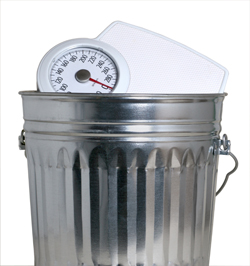 Focus on Body Composition…
Focus on Body Composition…
Tracking your weight is helpful, but alone it’s not enough. Instead of obsessing over the reading on the scale, you should shift your focus to body composition: Your ratio of fat to muscle. Body composition is one of the best ways to judge your progress.
Even if you’re not an athlete or bodybuilder, you should still set goals to develop and maintain muscle not only for how it looks, but also for what it does for your metabolism, your strength, your health and even your confidence.
The scale is not your enemy – it can be your good friend if you know how to use the numbers as part of the feedback you need to gauge progress and make course corrections. Getting emotional about what the scale says without considering body composition is where the trouble begins. Body weight alone can fool you.
How the scale lies to you, part 1: weight and fat are not the same
First and most important, the scale lies to you because it doesn’t tell you how much of your weight is fat and how much is muscle. The scale simply measures total body weight: fat, muscle, bone, organs, blood, water, digestive system contents, glycogen, everything!
Most scale-focused dieters assume that weight loss is good and weight gain is bad. But what if the weight you gain is 100% pure muscle? Isn’t that good?
What if fifty-percent of the weight you lost was muscle (which can easily happen if you don’t use strategies to build and feed muscle while you’re losing weight). Would you celebrate cannibalizing half of your own muscle tissue? Of course not.
Muscle is the weight you want to keep (or build). Fat is the weight you want to shed.
How the scale lies to you, part 2: Water
Your body weight can easily fluctuate 2-4 pounds (or more) from daily shifts in water weight alone. That shift could be even greater over the course of the first week on a diet, especially a reduced carb diet. The heavier you are to begin with, the bigger the first week’s weight loss (including water) is likely to be.
Losing water weight is easy. When I was in high school and college I had wrestler friends who would lose 10 to 15 pounds overnight to make a weight class, using natural diuretics, saunas, sweat suits and other dehydration tricks.
If you’re not a weight class athlete, what good is it to lose water weight only to gain it back as quickly as you lost it? That’s how the scale fools you (and diets programs trick you).
How the scale lies to you part 3: carbs (glycogen)
Does the amount of carbs in your diet fluctuate? (for, example do you use carb cycling, or refeed days or have have high carb cheat meals on occasion?)
Carbohydrates are stored in the muscle as glycogen and water is stored along with them. That’s why your weight can tick up a few pounds after a higher carb day (or meal).
For those wanting fat loss, the sudden increase on the scale without knowing about body composition could make you freak out.
For those wanting muscle gain, the increase on the scale without knowing about body composition could make you celebrate.
But both the panic and the celebration were premature. The scale lied again – in both directions. The burner didn’t gain fat weight and the builder didn’t gain muscle weight – it was just glycogen, and the water that came along with it.
How the scale lies to you part 4: (what’s in your gut)
Everything in your stomach and gastrointestinal tract has weight, so if you’ve eaten some “heavy” meals recently, you’ll weigh more than if you haven’t been eating much.
On the other hand, if you don’t eat anything for a day, you could lose a lot of weight, literally overnight, but how much of it is fat and how much is due to an empty belly?
You can lose a lot of body weight in single day, but rest assured, the fat loss you can get in one day is minimal, constrained by calorie math and physiology.
If you don’t eat, you lose weight that’s NOT body fat, just like you lose weight if you don’t hydrate.
This also explains the weight loss you see with colon cleansing. Why people feel the need to cleanse their colons (unless their gastroenterologist told them to), I’ll never understand. Yet, this is one of the oldest and biggest weight loss scams in the book.
Usually, health claims are made about cleansing along with the weight loss claims, and that’s what sucks people in. But there’s no science behind the claims. The weight lost was not fat.
Height-weight charts lie to you too
Height and weight charts supposedly tell you your ideal weight based on how tall you are. They were used for years by insurance companies, physicians, sports teams and the military and still are today. But they’re misleading because they don’t consider body composition.
According to a height-weight chart, a 5 foot 8 inch male bodybuilder weighing 200 pounds would be (mis)classified as “overweight” even if he had single-digit body fat, six pack abs and perfect health.
On the other hand, a 5 foot 4 inch 125-pound woman could have 33 percent body fat. According to the height-weight chart, she is a “healthy weight,” but according to her body fat level, she is “obese.”
Researchers call that normal weight obesity, or when the lean body mass is exceptionally low, its called sarcopenic obesity – which is a newly-recognized and growing epidemic. You may simply know it as, skinny fat.
Body mass index: another liar!
Even the body mass index (BMI) lies to you, and yet it’s used everywhere today to judge whether you’re overweight.
BMI is calculated with this formula: weight (kg) divided by height (m) squared. You’re classified as overweight if your BMI is over 25 and obese if your BMI is over 30.
According to the BMI, a skinny fat person could have a “healthy” BMI of 19 to 22 with a dangerously high level of body fat. A typical bodybuilder or strength athlete could have a “dangerously” high BMI of 30 and a healthy, low body fat level.
According to the BMI, almost every player in the national football league is overweight and some contestants in the Mr. Olympia contest are “morbidly obese!”
BMI lies to you – especially if you’re an athlete or you carry more muscle weight than the average person. Nowhere is body composition factored into the equation.
Body weight alone is deceiving
If you’ve ever dieted before, there may have been days that you wanted to toss your scale in the garbage can, smash it with a sledgehammer or hurl it out the window.
Unbeknownst to you, if you weren’t aware of body composition, you may have made progress that the scale didn’t reveal (you lost body fat that was masked by gaining water weight or glycogen, or, if you were lucky, you even gained muscle weight at the same time).
At other times, you may have rejoiced to a drop on the scale, but what really happened was not worth celebrating – you lost water weight or muscle weight (I put on black and hold a mock funeral every time a client loses muscle… )
Yes, the scale lies to you, but it’s not that tracking body weight on the scale is useless, tracking weight alone simply doesn’t give you the full picture. Going by body weight alone can lead to many false assumptions and bad decisions.
Keep weighing yourself, but don’t stop there – track your body fat percentage as well.
If you track your weight and your body fat, with that information put together, you see the full picture: you see your body composition.
Body fat and how to measure it

Also known as the pinch an inch test, you grab a skinfold (with your thumb and index finger) near your hip bone, and the calipers measure the thickness (of the fat and skin) in millimeters. You use a conversion to chart to calculate your body fat percentage. Easy-peasy.
Next, you multiply your total body weight by your body fat percentage to determine how many pounds of fat you’re carrying:
Example: you weigh 150 pounds. Your body fat is 20%. 150 X .20% = 30 pounds of fat.
Finally, you subtract your fat weight from your total body weight to determine your lean mass: 150 pounds minus 30 pounds of fat equals 120 pounds of lean body mass (LBM).
Now you have a clear picture of what matters the most: body composition, not just body weight. You can also see that you need to know how much you weigh to find out how much muscle weight and fat weight you have. Which is why I say…
Don’t throw away your scales!
Tracking body weight by itself has value. In study after study, people who self-monitor progress by tracking their weight almost always do better than those who don’t. But adding body fat testing on top of weight measurements is even better.
One caveat: don’t obsess over body fat numbers either. Simply remember these lessons about the difference between body weight, muscle weight and fat weight. This knowledge alone will change the way you think about diet and exercise and in turn change the way you act. You’ll act smarter! You’ll start thinking about muscle!
Look at it this way: If you were solid muscle and nothing jiggled (unless it was supposed to), and you were totally thrilled with what you saw in the mirror, would you care what the scale said?
In upcoming posts, I’ll share more detail about how to best use skinfold calipers, including reviews of the calipers, some of the potential pros and cons, what is an ideal body fat percentage and how to track body composition over time to guarantee you succeed in the long term.
Until then, train hard and expect success!
Tom Venuto, author of Burn the Fat, Feed the Muscle
Recommended resources:
Accu measure body fat calipers (CLICK HERE)
Burn the Fat, Feed the Muscle: chapter 4: measuring body composition (CLICK HERE)
Subscribe to the Burn the Fat weekly newsletter and get my ebook, "The 20 Best Fat-Burning, Muscle-Building Recipes Of All Time" FREE!
Your email is safe with me!

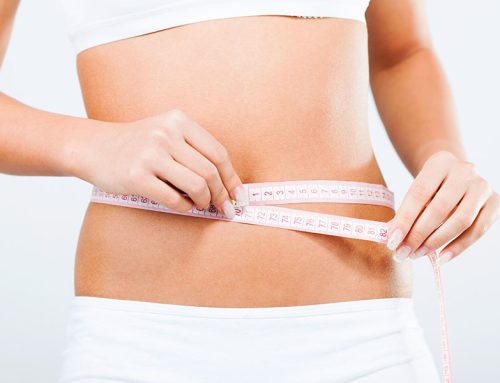

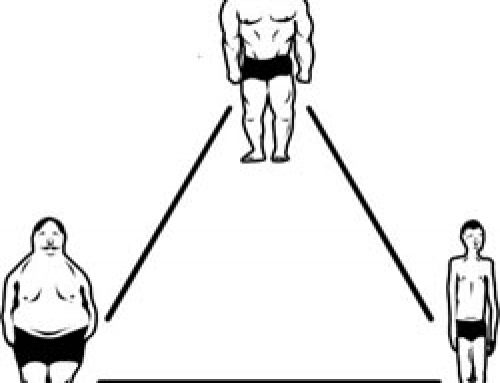
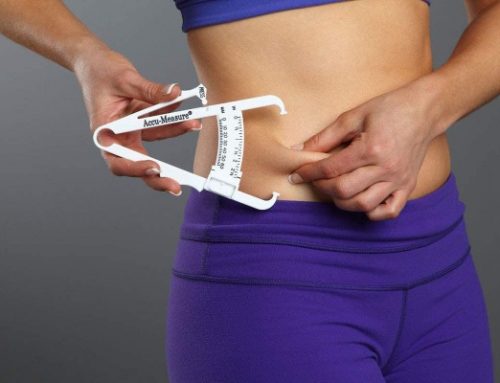
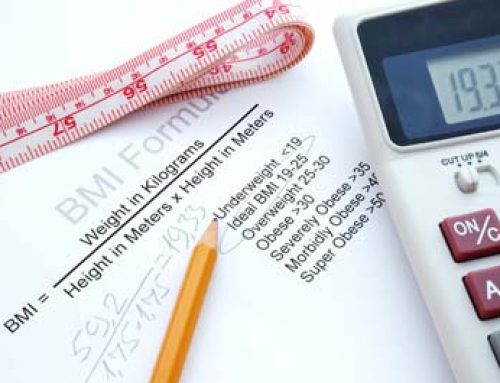
Thank you sir!
Great topic. I think all of us suffer from this at one time or other. Great points on scale weight and what you say mirrors my experience. I am an avid IF guy and track things meticulously. Yes, I even have a BM check box on my daily sheet.
– Each Month I do one 44 hour fast. After each long fast I weight exactly 4 pounds less the next day.
– If I eat big on a lifting day I know I will see +2 – 3 pounds on the scale the next day. It can get in my head sometimes but I have to remember it is just water and glycogen.
I also am ready each month to remind my wife that the scale is really lying that one week. Then back to normal the next. It still drives her nuts each time but it helps to know what is going on.
Good morning. I love your site. Thank you for providing such great information. I am in a 90 day challenge at my gym. I am in the women’s body fat percentage category. Well we are at day 83 and I am in the top 5 out of 81. My trainer measures my body fat with calipers. I have my final measurement next Tuesday. Is there anything I can do or anything I should not do to be sure I get the best possible results? I am not looking to cheat but want to be sure I get the best possible reading. I am a 43 year old woman. 5’3 and 140lbs. I started at 22.5% and my last measurement was 18.8%. Any last minute tricks I can use to maybe drop a little more in a week? Your advice is sincerely appreciated.
if what youve been doing has been working up to day, keep doing more of it. scrambling behaviors at the last minute often backfire. As this post mentions (the wrestler story), there ARE last minute tricks that take off weight, but “tricks” attempting to do that often make you look worse (flatter). Many people, who respond well to carb ups, actually eat more the final week the 2-3 days before a shoot or show, assuming they have been somewhat carb and calorie depleted the previous period (90 days, etc). . its actually the opposite of what most people do – scramble to lose more fat, starve, dehydrate, which makes them look flat. If youre already in shape a week out, a carb up makes your muscles look fuller.
I agree that a balanced approach is the best way to go. I use a combination of body fat testing, the mirror, measuring tape and yes…the scale!
But yes, I do keep the big picture in mind and make sure I keep moving forward. Once you realize all of the factors you mentioned about the scale you won’t freak out if you don’t like what you see.
To quote Lester Burnham from American Beauty – “I want to look good naked.” Anything beyond that is a bonus.